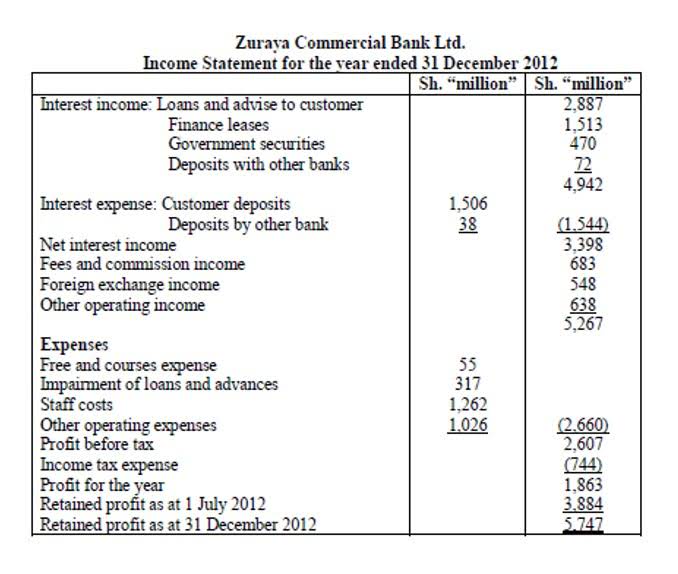
But, using it along with other techniques can provide an even clearer picture percent of sales method accounting of your business’s financial health. The use of technology not only streamlines the process of managing accounts receivable but also enhances the accuracy of estimating uncollectible accounts, leading to better financial decision-making and risk management. Under the direct write-off method, bad debt expense is recognized only when specific accounts are deemed uncollectible.

Bad Debt Expense Example
A general ledger account containing the correct total amount without containing the details. For example, Accounts Receivable could be a control account in the general ledger. Each day the total of the day’s credit sales and the day’s collections are posted to this account. However, the details involving specific customers’ accounts will be found in a subsidiary ledger. In the context of accounts receivable it is the amount of accounts receivable that is expected to be collected.
- The difference between assets and liabilities, such as stockholders’ equity, owner’s equity, or a nonprofit organization’s net assets.
- These forecasting methods are often called into question, as they’re more subjective than quantitative methods.
- This is why, for purposes of financial reporting (not tax reporting), companies should use the allowance method rather than the direct write-off method.
- When applying this method, it is crucial to note that only credit sales are considered, as cash sales have already been received and do not affect the allowance for doubtful accounts.
- When used with accurate sales data, it can serve as a guide for your upcoming sales revenue.
- This method focuses on the income statement and its relationship to accounts receivable.
How to Create a Frictionless Payment Experience and Get Paid Faster
Liz looks through her records for the month and calculates her total sales at $60,000. It’s been a decent month and she’ll break even, but she wants to know what the following month might look like if sales increase by 10 percent. Most businesses think they have a good sense of whether sales are up or down, but how are they gauging accuracy? With shifting budgets and different departments needing more or less from the company every month, having a precise account of every expense and how it relates to future sales is a must. Businesses can determine how much (approximately) they can earn or lose in all accounts by taking the revenue percentage relevant to every account and applying it to the forecast number.
- The allowance method for doubtful accounts serves as a proactive measure to anticipate and manage the impact of potential bad debts.
- Nevertheless, auditors look closely at changes in methodology and whether they’re justified by actual collection experience.
- The Allowance for Doubtful Accounts account can have either a debit or credit balance before the year-end adjustment.
- Different industries face unique challenges and opportunities in managing their receivables, which necessitates tailored approaches to the percentage of receivables method.
- The percentage of receivables method is a pivotal tool in accounting, serving as a gauge for estimating the amount of accounts receivable that may not be collected.
- Uncollectible accounts, often referred to as bad debts, are amounts owed to a company that are deemed unlikely to be collected.
What Is Bad Debt Expense?
- This method categorizes receivables into age groups, such as current, 30 days, 60 days, and so on.
- For example, purchase discounts may be applied to purchases once a unit count passes, say, 10,000 per year.
- This method is a bit more nuanced since it recognizes that the longer an invoice remains unpaid, the less likely it is to be collected—it’s not just applying a raw percentage to all credit sales.
- For example, the accounts receivable subsidiary ledger provides the details to support the balance in the general ledger control account Accounts Receivable.
- Under the accrual basis of accounting, revenues are recorded at the time of delivering the service or the merchandise, even if cash is not received at the time of delivery.
- Gem anticipates that approximately $2,000 of this is not likely to turn to cash, and as a result, Gem reports a credit balance of $2,000 in Allowance for Doubtful Accounts.
This is in contrast to the direct write-off method which records the bad debt expense when the amount is identified as irrecoverable which might be a completely different period from when the original sale was recorded. This results in a final credit balance of $28,000 in the Allowance for Doubtful Accounts, which is expected since this account is a contra asset account and typically carries a credit balance. This adjustment ensures that the financial statements accurately reflect the company’s expected losses from uncollectible accounts, providing a clearer picture of its financial position. One such factor is the historical percentage of credit sales that resulted in bad debts. Companies meticulously analyze their past receivables that were written off as uncollectible to inform their current rate, ensuring it is grounded in actual experience.

Importance of Adhering to GAAP in Financial Reporting

At the same time, the allowance for doubtful accounts is increased on the balance sheet, reducing the net accounts receivable by the same amount, thereby presenting a more accurate financial position. It’s important Accounts Payable Management to note that this method doesn’t adjust the balance in the allowance for doubtful accounts on the balance sheet. This can result in a disconnect between the income statement and balance sheet when it comes to the treatment of accounts receivable and bad debts.

- This information can be helpful when presenting to investors, predicting how much cash flow you’ll have the following year, and understanding how much actual owners’ equity you have.
- Classifying accounts receivable according to age often gives the company a better basis for estimating the total amount of uncollectible accounts.
- The general ledger account Accounts Receivable usually contains only summary amounts and is referred to as a control account.
- The integration of these technologies into the receivables management process not only enhances accuracy but also provides strategic insights that can inform credit policies and customer relationship management.
- For example, the term 2/10, net 30 allows a customer to deduct 2% of the net amount owed if the customer pays within 10 days of the invoice date.
- The discount is referred to as a sales discount, cash discount, or an early payment discount, and the shorter period of time is known as the discount period.
In a robust economy, customers may be more likely to fulfill their payment obligations, potentially leading to a lower percentage rate. Conversely, during economic downturns, the risk of default increases, and companies may adjust their rates upward to account for the heightened risk of non-payment. For CARES Act instance, if an industry is facing widespread challenges that affect customers’ ability to pay, companies within that industry may need to increase their allowance for doubtful accounts.
Assess Line Item Totals and Their Proportions Relative to Sales

Look out for companies that switch estimation methods, which might be done to manipulate earnings. Nevertheless, auditors look closely at changes in methodology and whether they’re justified by actual collection experience. Shaun Conrad is a Certified Public Accountant and CPA exam expert with a passion for teaching. After almost a decade of experience in public accounting, he created MyAccountingCourse.com to help people learn accounting & finance, pass the CPA exam, and start their career. I’ll now zoom in on one detailed case study and go through this whole process in detail. Of these expenses, he sees that only the last two are tied to sales as they fluctuate.
